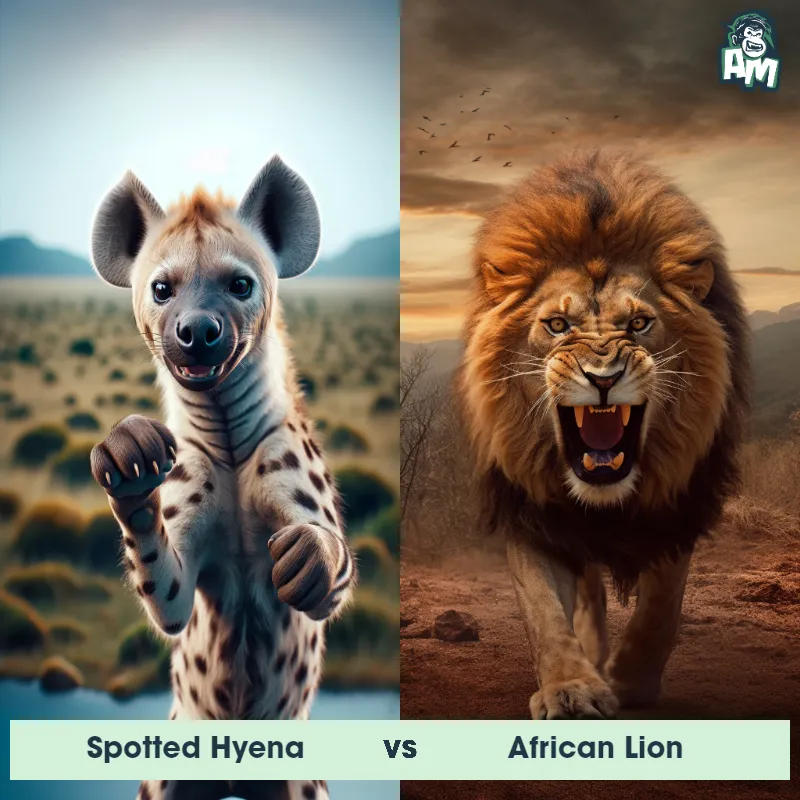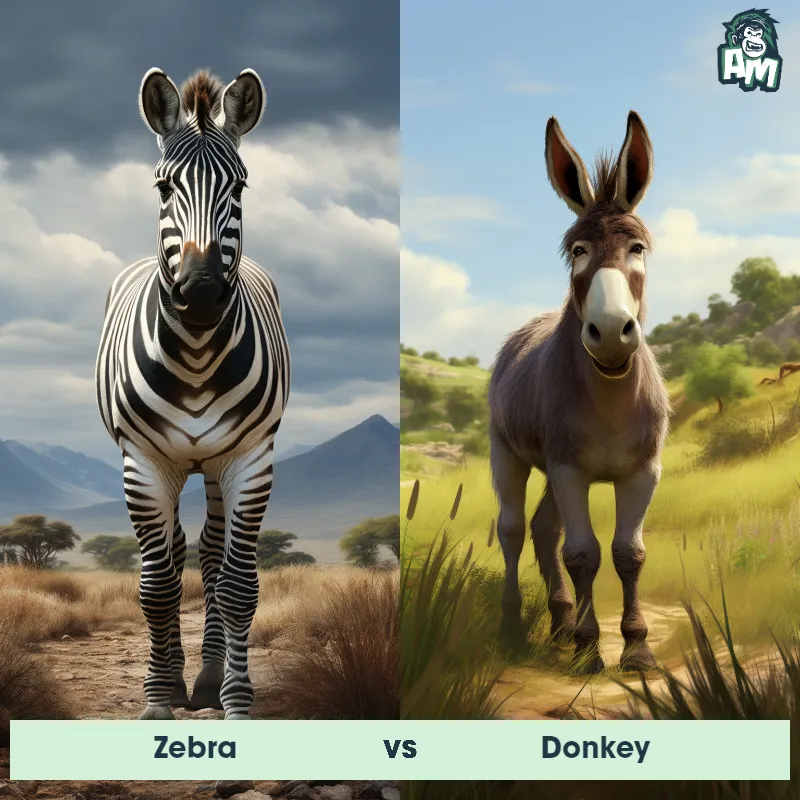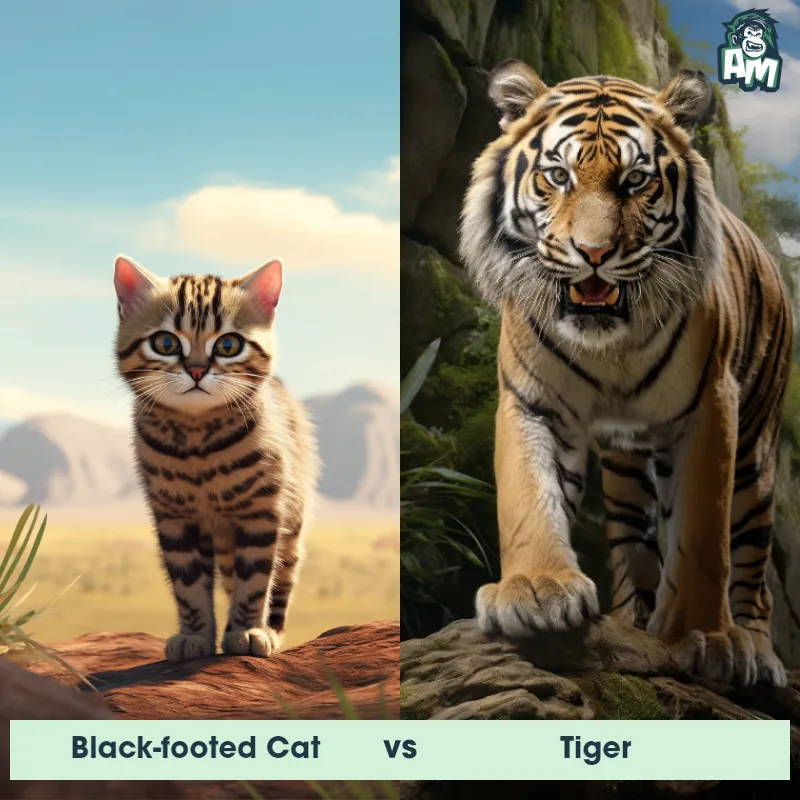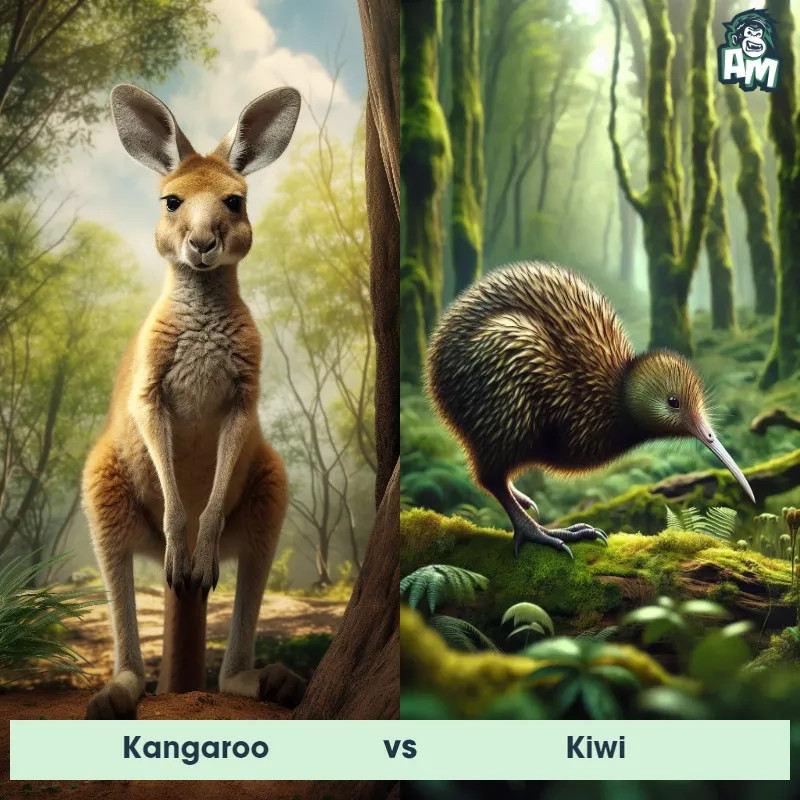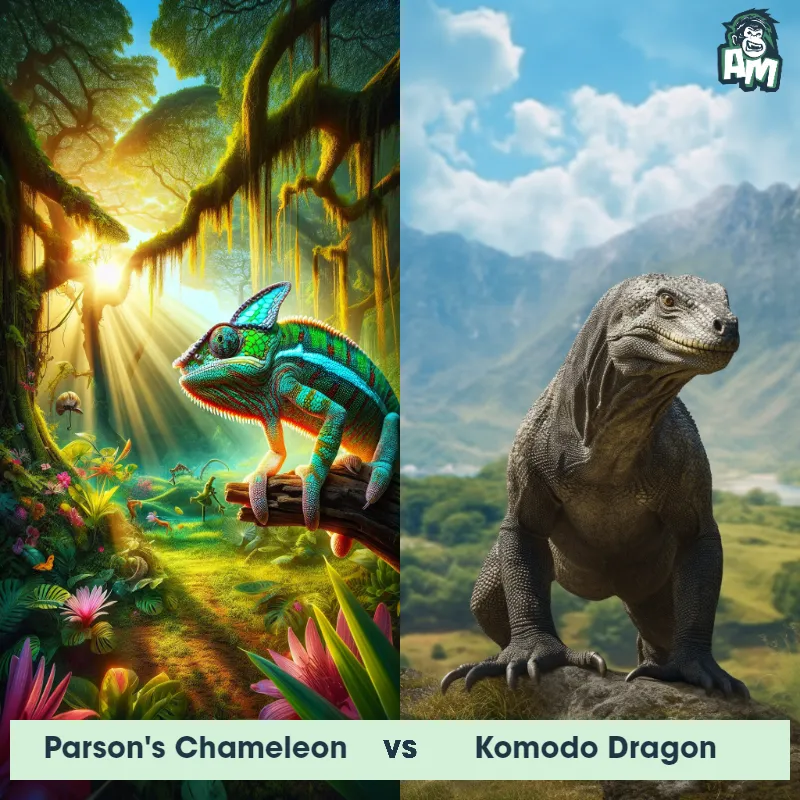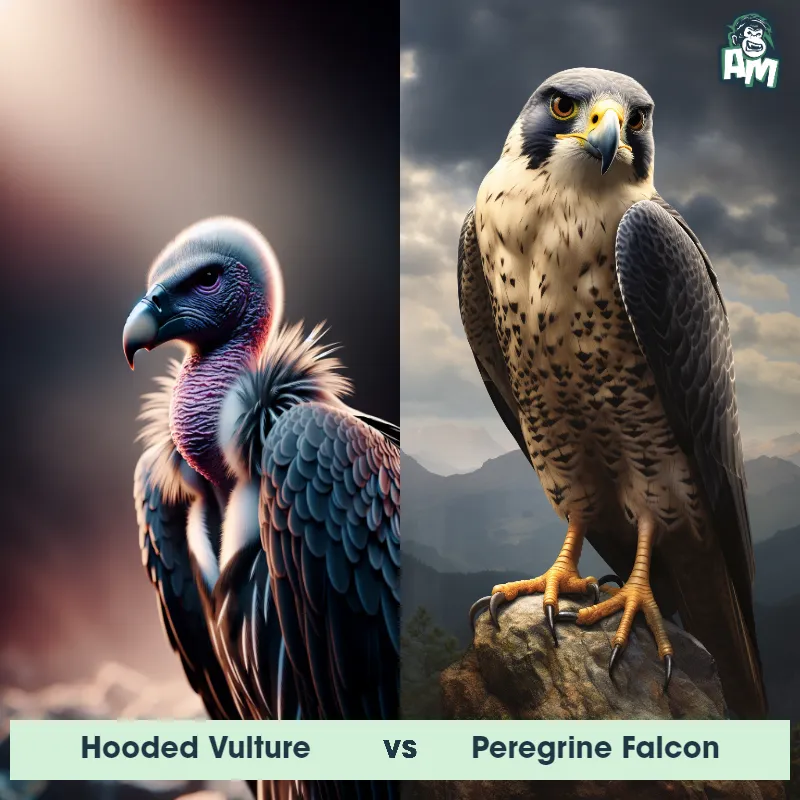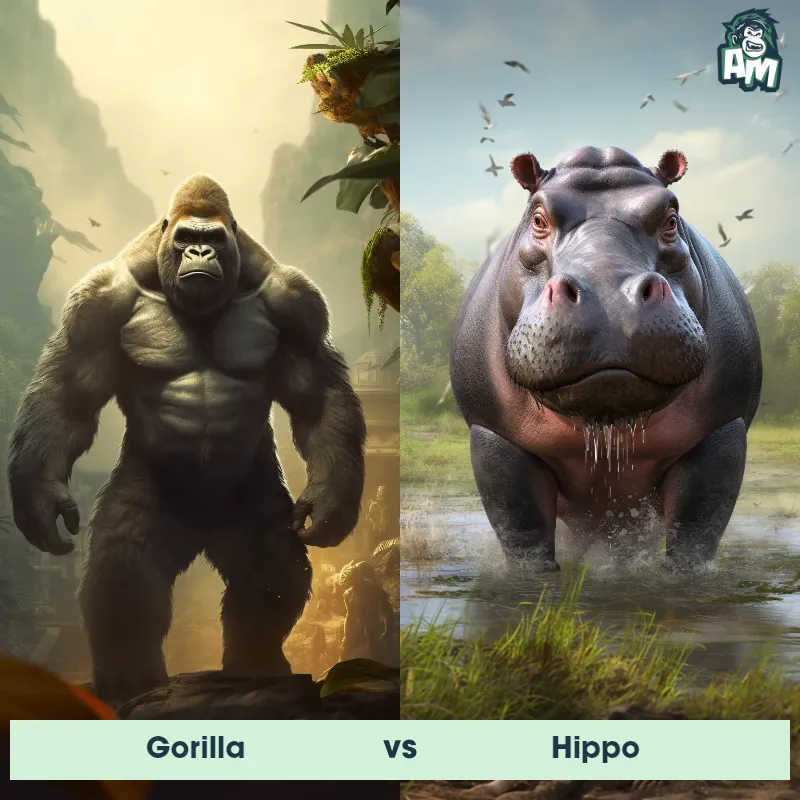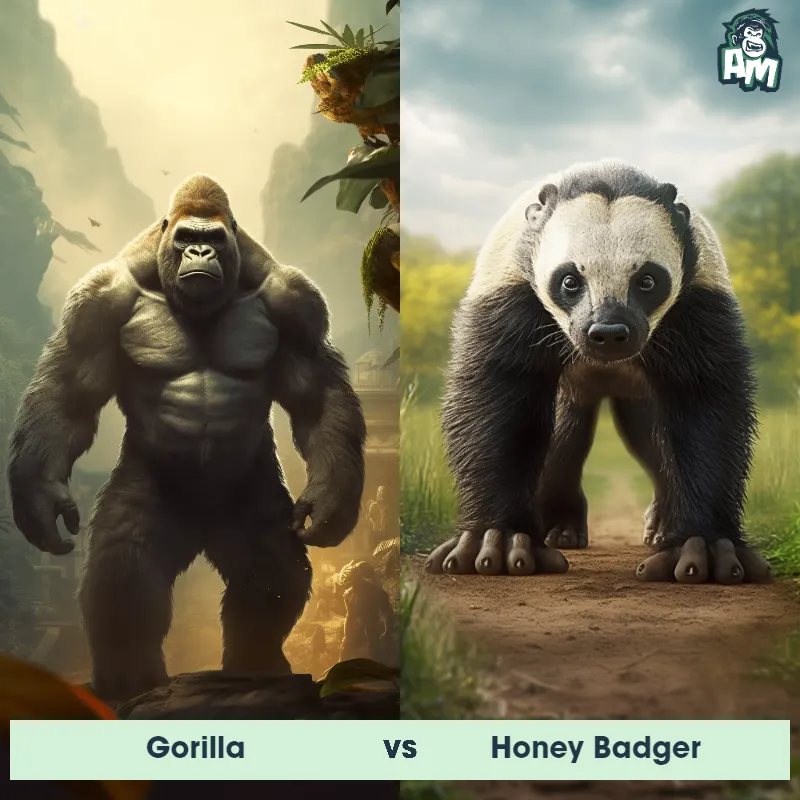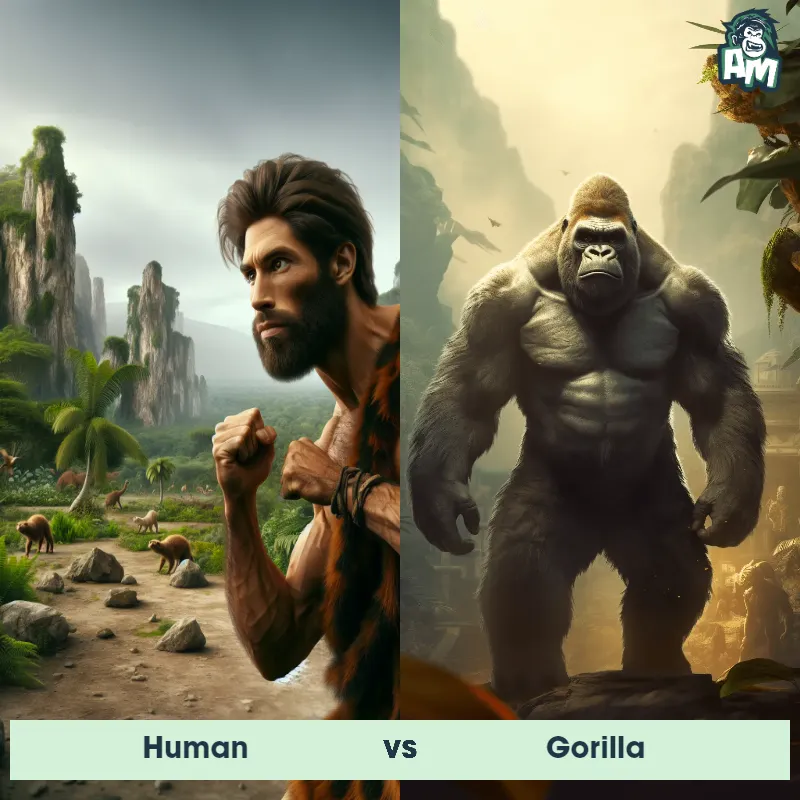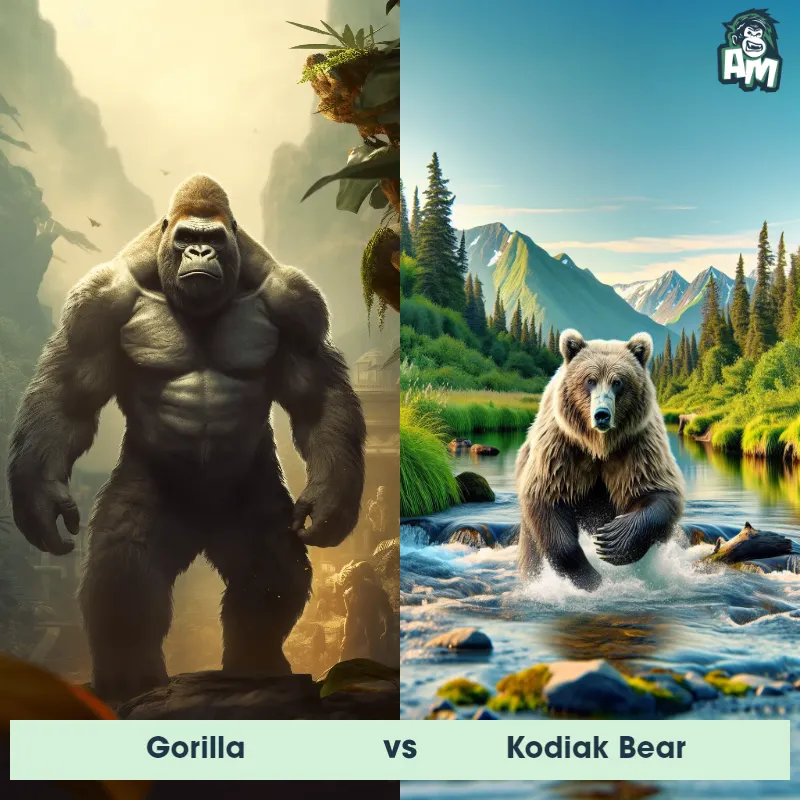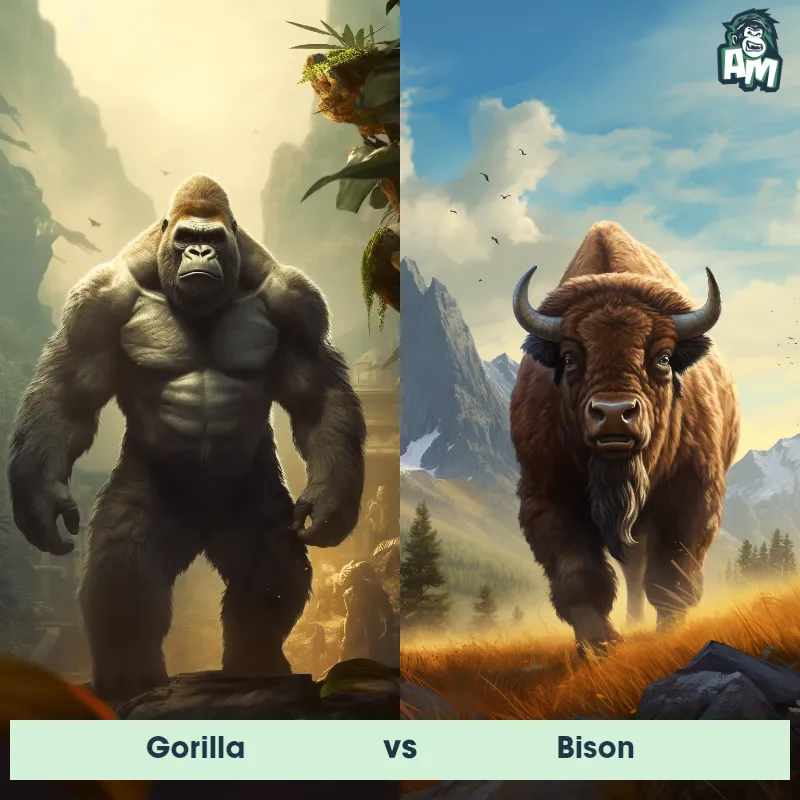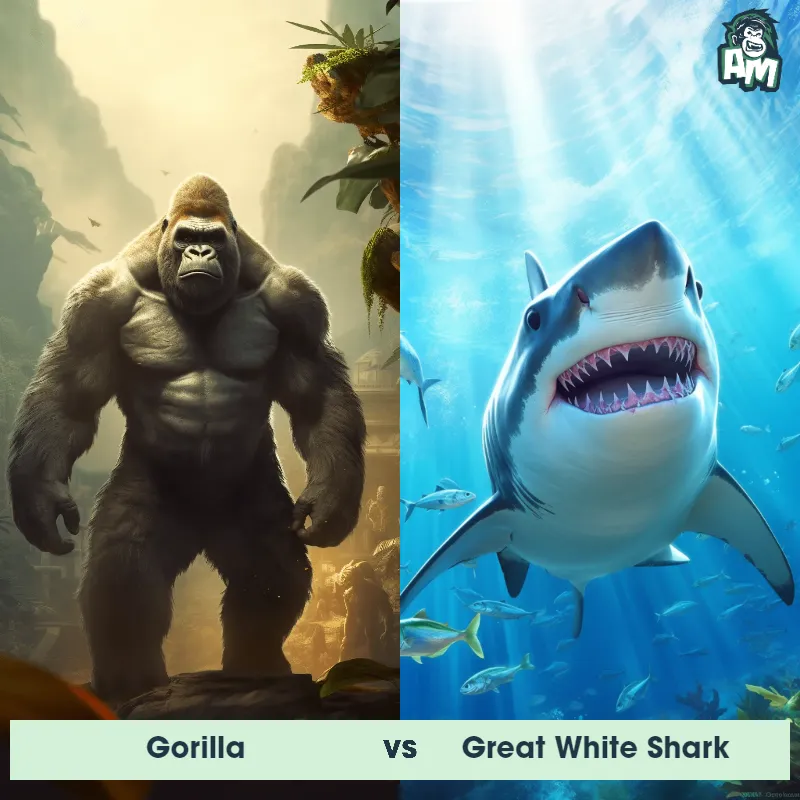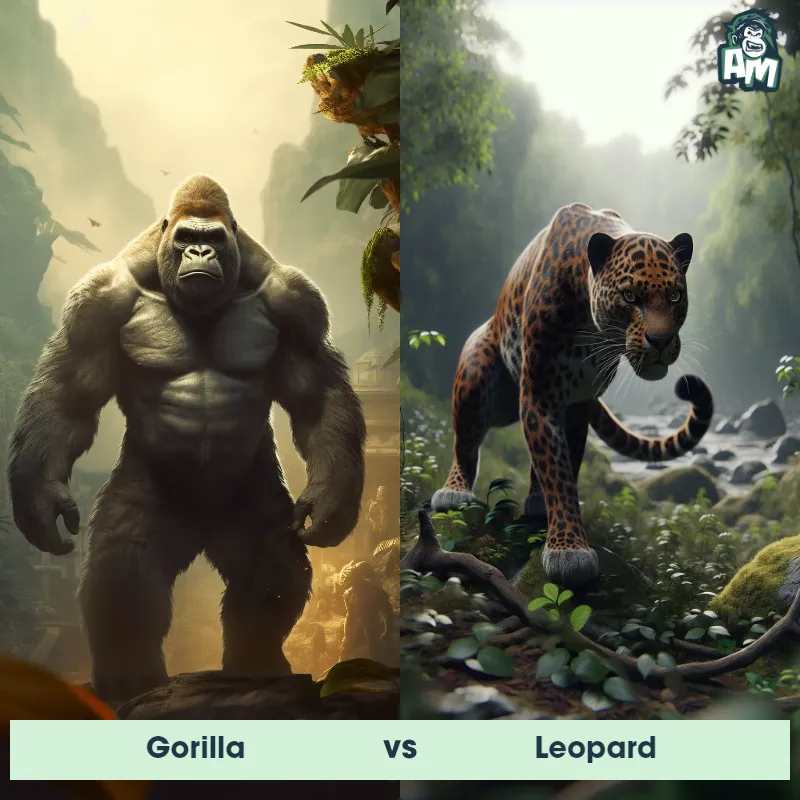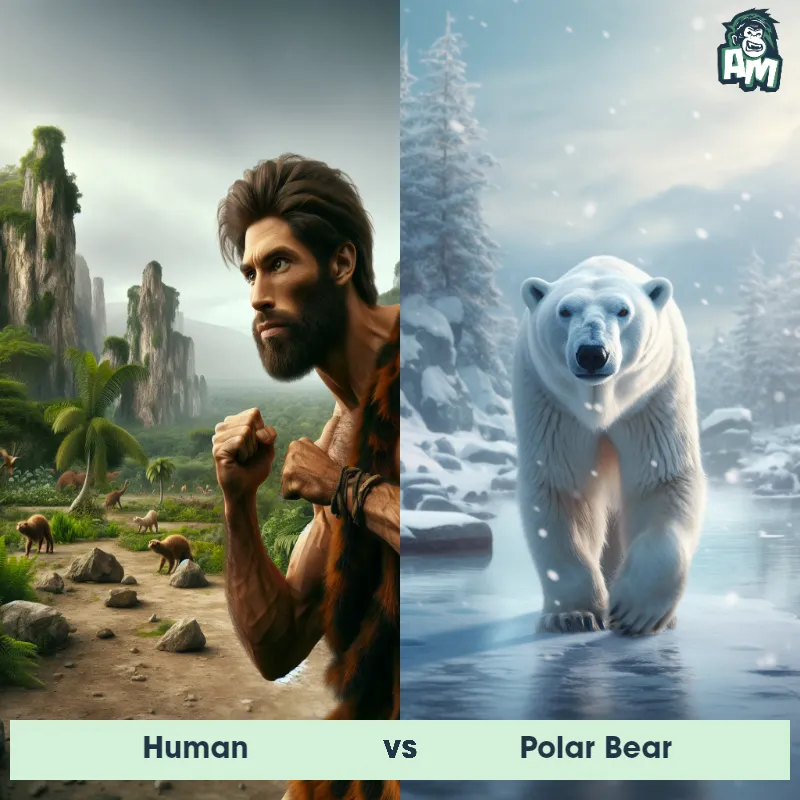Gorilla vs MandrillSee Who Wins

Welcome, ladies and gentlemen, to this thrilling matchup between two powerful creatures of the animal kingdom! We have a tense battle ahead of us as a mighty Gorilla takes on a fierce Mandrill. Who will emerge victorious in this three-round showdown? Let's dive right into the action and find out!
Contender 1: Gorilla
The Gorilla is a large, powerful primate that is native to the forests of central and eastern Africa. They are known for their muscular build, with males weighing up to 400 pounds and standing up to 6 feet tall. Gorillas have a distinctive black fur coat and a broad, flat face with a prominent brow ridge. They are herbivores, primarily eating leaves, stems, and fruits, and live in social groups led by a dominant male.
Fun Fact: Gorillas are one of the few animals that have been observed using tools in the wild, such as using sticks to measure the depth of water or as a weapon to defend themselves.
Contender 2: Mandrill
The Mandrill, scientifically known as Mandrillus sphinx, is a highly distinctive primate species native to the tropical rainforests of western-central Africa. These charismatic creatures are known for their striking appearance, with vibrant colored fur and distinctive facial features. Adult males are particularly striking, with their bright blue and red nose, pronounced brow ridges, and elongated canine teeth. They have a sturdy body structure and possess a long tail, which aids in their arboreal locomotion. Mandrills are social animals and live in large troops, consisting of one dominant male, a group of females, and their offspring. As omnivores, their diet incorporates a variety of fruits, seeds, leaves, insects, and even small vertebrates. They communicate using a combination of vocalizations, facial expressions, and body gestures.
Fun Fact: One fascinating fact about the Mandrill is that it holds the title for having the most colorful face among all primates, with a gradient of vibrant hues ranging from electric blue to purple, red, and pink.
Matchup Stats
| Gorilla | Mandrill | |
|---|---|---|
| Size | Up to 6 feet (1.8 meters) | Up to 3 feet (0.9 meters) in height |
| Weight | Up to 400 pounds (181 kilograms) | Up to 77 pounds (35 kilograms) |
| Speed | Speed: 20 mph (32.19 km/hr) | 20mph (32km/h) |
| Key Strength | Powerful arms and large size | Aggressive canine teeth |
| Biggest Weakness | Vulnerable to attacks on the head and neck | None in particular |
Current Votes
Gorilla vs Mandrill
See Who Wins
View More Matches
Looking For More?
Similar Matches
Scientific Stats
| Gorilla | Mandrill | |
|---|---|---|
| Scientific Name | Gorilla | Mandrillus sphinx |
| Family | Hominidae | Cercopithecidae |
| Habitat | Forests | Tropical rainforests |
| Geography | Central and Eastern Africa | Western-central Africa |
| Diet | Herbivore | Omnivorous (fruits, seeds, leaves, insects, small vertebrates) |
| Lifespan | 35 years - 50 years | 20 years - 25 years |
Key Differences between Gorilla and Mandrill
- Color: While Gorillas have predominantly black fur, Mandrills have very colorful faces with shades of blue, red, and yellow. Their bodies, on the other hand, have olive or brownish fur.
- Size: The Gorilla is generally much larger than the Mandrill, with adult gorillas weighing up to 400 pounds and standing around 5 to 6 feet tall on average, while adult male Mandrills weigh about 70 pounds and stand around 3 feet tall.
- Sexual Dimorphism: Male Mandrills display a pronounced sexual dimorphism in size and coloration. They are much larger than females and have vibrant facial colors, while female Mandrills have a more subdued coloration similar to juveniles. In contrast, sexual dimorphism is less apparent in gorillas, with males only slightly larger and having less distinct color differences compared to females.
- Body Shape: Gorillas have a robust and muscular build, with broad chests and shoulders, whereas Mandrills have a more slender and agile body structure with long limbs and a slender tail.
- Nose: Gorillas have a flatter, broad nose with wide nostrils, whereas Mandrills have a narrower and more pointed nose.
- Facial Features: Gorillas have a large, prominent forehead with a sagittal crest on top, while Mandrills have a more elongated muzzle and a distinct, colorful patterning on their face that includes a dark stripe across each cheek.



